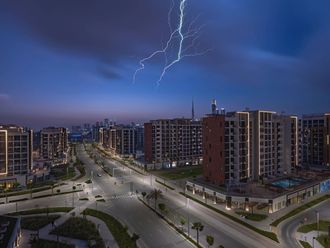Gulf economies have traditionally not been known as prominent consumers of energy, and their position in global energy markets over the past 40 years has been as producers. But local energy demand is rising — according to International Renewable Energy Agency (Irena), the GCC’s consumption of energy rose on average 5 per cent per annum during the 2000s.
GCC countries are also experiencing significant growth in electricity demand. Peak electricity load in Saudi Arabia has been rising by 7 per cent every year. It is projected to increase by 32 per cent from 2014 to 2020, and more than double by 2032. While the increase needs to be catered to, there is an opportunity to reduce energy waste as we grow our cities and communities by applying smart building standards to balance the energy mix.
The international smart building market is expected to touch $36.3 billion (Dh133 billion) by 2020 from $7.26 billion in 2015, growing at a compound annual growth rate of 38 per cent. Forward-thinking business leaders across the GCC are already recognising that a smarter build environment can deliver gains stretching far beyond energy efficiency and sustainability.
With the potential to deliver huge cost savings, become a source of fresh revenue streams and enhance employee productivity and well-being, smart buildings are becoming a critical source of competitive advantage. According to a study by Honeywell, the UAE is leading the GCC in smart building initiatives, home to more than two-thirds of the 1,236 LEED-certified projects in the region. The most notable is Dubai Electricity and Water Authority’s (DEWA) new headquarters. This will be the tallest, largest and smartest net zero energy building in the world once it’s completed in 2019.
While the UAE has been the quickest to adapt to the surge in growth and look for alternatives, the opportunity is still present for other GCC countries, so long as they overcome a few legal and commercial obstacles.
A hurdle faced by some is attributing a tangible value on smart buildings. A report by Charles Russell Speechlys and Longitude found that while more than 70 per cent of the 270 senior developers, landlords, occupiers, advisers and investors interviewed saw the opportunity for revenue growth through the data that smart buildings can provide, half remain unable to quantify it.
This causes concern when project planning and trying to justify the extra investment needed to increase the efficiency of the building. However, as the use of commercial real estate is transformed, investors, owners and tenants will need to factor in the “digital potential” of buildings to their valuations.
Big data captured by buildings can enable owners to deliver energy savings, make more efficient use of space, and provide tenants with commercially valuable insights that will justify higher rental income — and impact the potential returns investors can realise from commercial real estate.
Another consideration is managing current buildings. A staggering 80 per cent of the industry is worried about building obsolescence as a consequence of the smart building revolution. This has spurred the trend of retrofitting, in which owners refresh their buildings in an attempt to avoid obsolescence, and increase energy efficiency.
The upgrading of dated systems and rationalising power and water consumption — including green building regulations; lighting, water and cooling retrofits; district cooling for both new builds and retrofits; water reuse and irrigation techniques; and street lighting efficiency — have a part to play in energy saving, and driving the energy initiatives of governments across the GCC.
Data security of businesses can also pose a significant risk when making the transition to smart buildings. In fact, nine in ten occupiers and building owners responding to our research were concerned about the greater risk of businesses being hacked through the building as a result of smart systems use.
More than half of those interviewed say data protection issues arising from increased use of smart systems is a significant risk for their businesses over the next five years. The move towards smart buildings and the Internet of Things (IoT) is opening a Pandora’s box of legal risks around cyber security and data protection.
Using multiple smart systems, installing technology from different providers and using IoT devices in the workplace opens up new access points for cyber criminals, particularly where smart system manufacturers lack cyber security expertise. In the IoT era, the UAE is also one of the world’s best-prepared countries in cybersecurity, ranked 17 out of 105 countries by the United Nations’ International Telecommunications Union. The Dubai Government also recently launched its Cyber Security Strategic Plan to enhance protection of government services — a great step toward clear accountability for managing cyber risks.
The revamp of any industry will face challenges, but we are becoming increasingly connected in our everyday lives, and this shift is prevalent in buildings, too.
All stakeholders must pay attention to where smart real estate is heading, as there are big rewards on offer — not just for those businesses occupying smarter office and retail buildings, but also for landlords, developers, investors and business services providers.
—The writer is a Partner at the law firm Charles Russell Speechlys.












